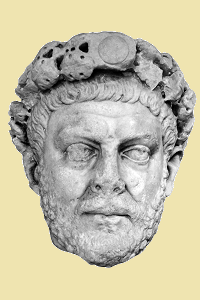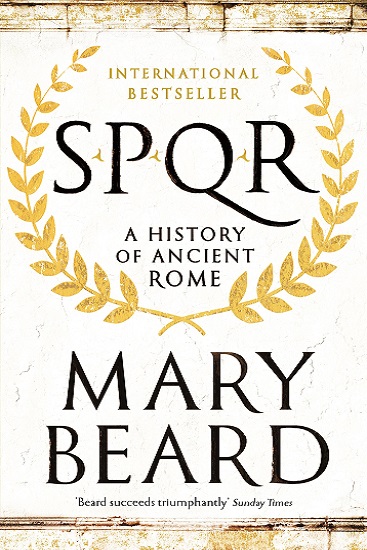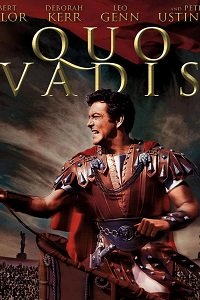The Roman conquest of Germania: A historical account of the military campaigns, cultural clashes and legacy
Published on 16 April 2023Reading time: 15 minutes
The Roman conquest of Germania, a vast region encompassing modern-day Germany, Austria, and parts of the Netherlands, Denmark, and Switzerland, was a pivotal moment in ancient European history. It marked a decisive turning point in the Roman expansionist policy and revealed the limits of Roman military might against the fierce and elusive Germanic tribes. The Roman invasions of Germania spanned over several centuries and involved numerous military campaigns and cultural clashes, leaving a lasting impact on the region's political, social, and cultural development.
The Roman conquest of Germania (12 BC)
The first recorded Roman invasion of Germania took place in 12 BC, under Emperor Augustus who dispatched his stepson, General Nero Claudius Drusus, to subjugate the region. General Drusus was the brother of the future emperor Tiberius. The Roman army advanced along the Rhine river, conquering several Germanic tribes and establishing military outposts and forts. However, Drusus' campaign was cut short when he died from injuries sustained in a fall from his horse. His successor, General Tiberius, continued the conquest, but faced stiff resistance from the Germanic tribes, who launched several counter-attacks and ambushes including the Cherusci tribe, led by the legendary warrior Arminius.
The Battle of Teutoburg Forest (9 AD)
The most famous and decisive battle of the Roman invasions of Germania was the Battle of Teutoburg Forest in 9 AD. It was fought between the Roman army, led by General Varus, and a coalition of Germanic tribes, led by Arminius. The battle was fought in the dense forests of modern-day Lower Saxony and was a disastrous defeat for the Romans. The Germanic tribes ambushed the Roman army, using guerrilla tactics and superior knowledge of the terrain, and killed or captured over 20,000 Roman soldiers. The defeat was a massive blow to Roman prestige and expansionist ambitions and effectively ended the Roman conquest of Germania.
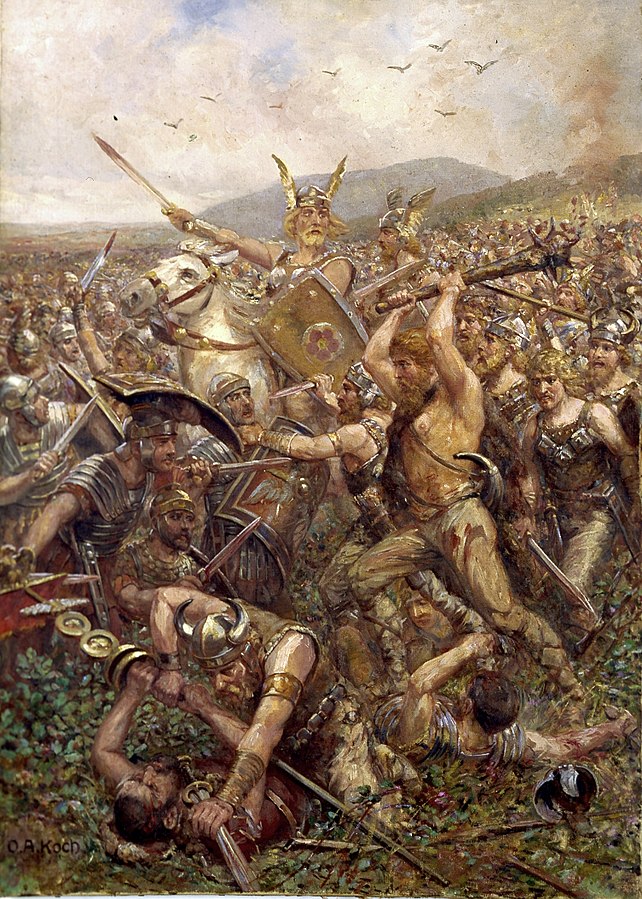 The Varus Battle by Otto Albert Koch Public domain |
The Battle of Teutoburg Forest had far-reaching consequences for both the Romans and the Germanic tribes. It led to a shift in Roman policy towards Germania, as the Romans abandoned their attempts to conquer and assimilate the region and instead focused on maintaining a defensive line along the Rhine river. The defeat also emboldened the Germanic tribes and paved the way for their eventual unification and rise to power in the region.
The Roman-Germanic cultural clash
The Roman invasions of Germania also had a profound cultural impact on the region. The clash between the Roman and Germanic cultures was characterized by stark differences in language, religion, social customs, and political organization. The Romans brought with them a highly organized and hierarchical system of government, religion, and culture, which clashed with the more decentralized and tribal systems of the Germanic tribes. The Romans also introduced Latin as a written language and later spread Christianity, while the Germanic tribes spoke various dialects of Germanic languages and practiced a mix of pagan and animistic religions.Despite these differences, there were also instances of cultural exchange and assimilation between the Romans and Germanic tribes. The Romans adopted several Germanic military tactics , such as the use of light cavalry and the creation of defensive walls and ditches. The Germanic tribes, in turn, were exposed to new technologies and cultural practices brought by the Romans, such as urban planning, agriculture, and the production of pottery.
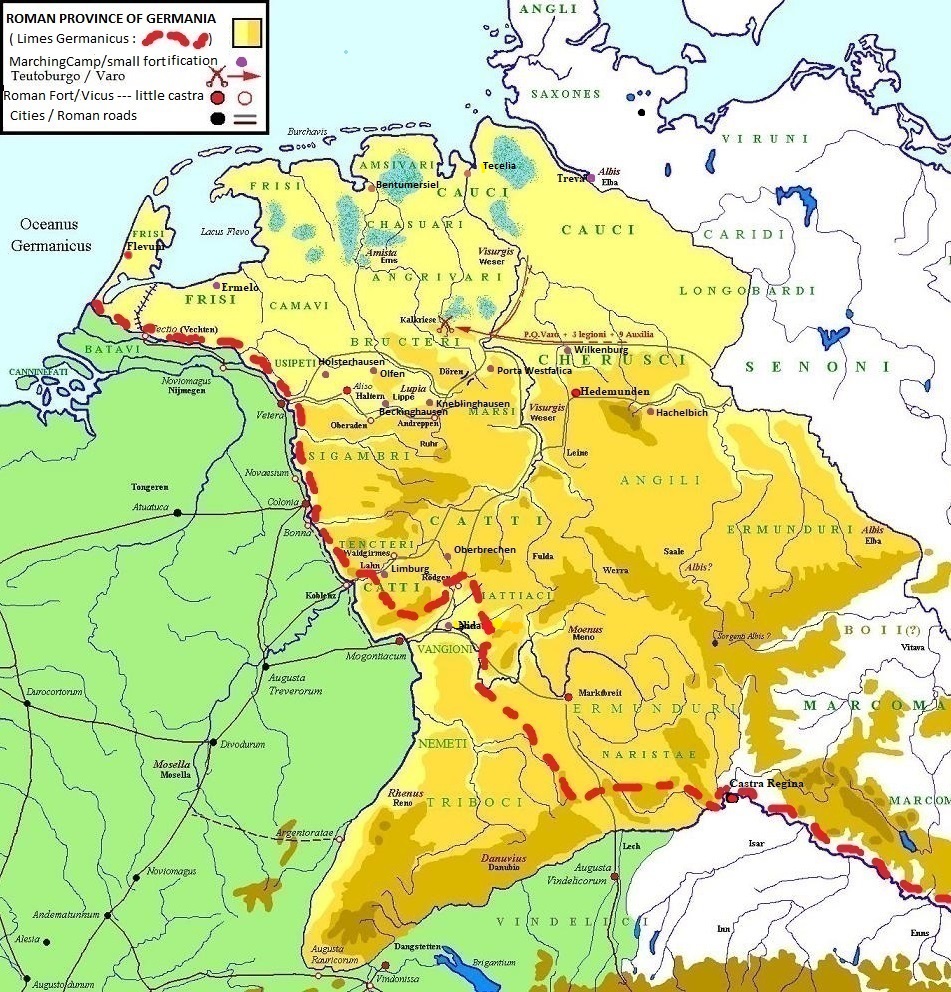 Map of the Roman province of Germania Antiqua from 7 BC to 9 AD CC BY-SA 4.0 |
However, the clash between the two cultures was most evident in their respective attitudes towards warfare and violence. The Romans viewed warfare as a means to conquer and subjugate other peoples, while the Germanic tribes saw it as a way to defend their land and honor. This fundamental difference in perspective led to frequent conflicts between the two groups, with each side often viewing the other as barbaric and uncivilized.
The cultural clash between the Romans and Germanic tribes was also reflected in their art and architecture. Roman art and architecture were characterized by a focus on symmetry, order, and precision, while Germanic art was more organic and expressive, often featuring intricate designs and animal motifs. Roman architecture was grand and monumental, with structures like aqueducts, amphitheaters, and temples, while Germanic architecture was more humble and functional, with simple wooden structures and earthen fortifications.
Despite the cultural differences and clashes, the Roman conquest of Germania left a lasting legacy on the region. The introduction of Roman law, administration, and technology helped to lay the foundation for the development of modern Europe. The Romanization of the region also contributed to the emergence of a shared European identity, with Latin becoming the language of scholarship, trade, and diplomacy throughout the continent.
The consequences of the Roman conquest of Germania
The Roman conquest of Germania had significant consequences for the region and its future development. It introduced new cultural, social, and political influences to the area, marking the beginning of a new era of contact and exchange between Romans and Germanic tribes. The Roman conquest of Germania also had a significant impact on European military history. It showed the limits of Roman military power against fierce and elusive Germanic tribes, and inspired guerrilla tactics and defense strategies that were successfully used by Germanic tribes against Roman invaders and later against other foreign conquerors.Furthermore, the Roman conquest of Germania influenced the development of modern European culture. The Romans introduced new concepts and technologies, such as the construction of roads, military forts, and other infrastructure that enabled greater economic and cultural integration between different regions of the Empire. They also introduced Latin as a common language and contributed to the emergence of classical culture that influenced European literature, art, and philosophy for centuries to come.
SOURCES
- The German Policy of Augustus (C.M. Wells, Oxford: Clarendon Press, 1972)
- The Germanic Wars and the Imperial Cult in Rome (J.B. Rives, Greece & Rome volume 46 no. 2, 1999)
- The Complete Roman Army (A. Goldsworthy, London: Thames & Hudson, 2003)
- Roman History, Vol. IV, Books 51-55 (Dio Cassius, Loeb Classical Library Harvard University Press, 1925)
- Germania (Tacitus Cornelius, Penguin Classics, 1970)
YOU MAY ALSO LIKE
Return from The Roman conquest of Germania to The Roman Empire
Return from The Roman conquest of Germania to Homepage
